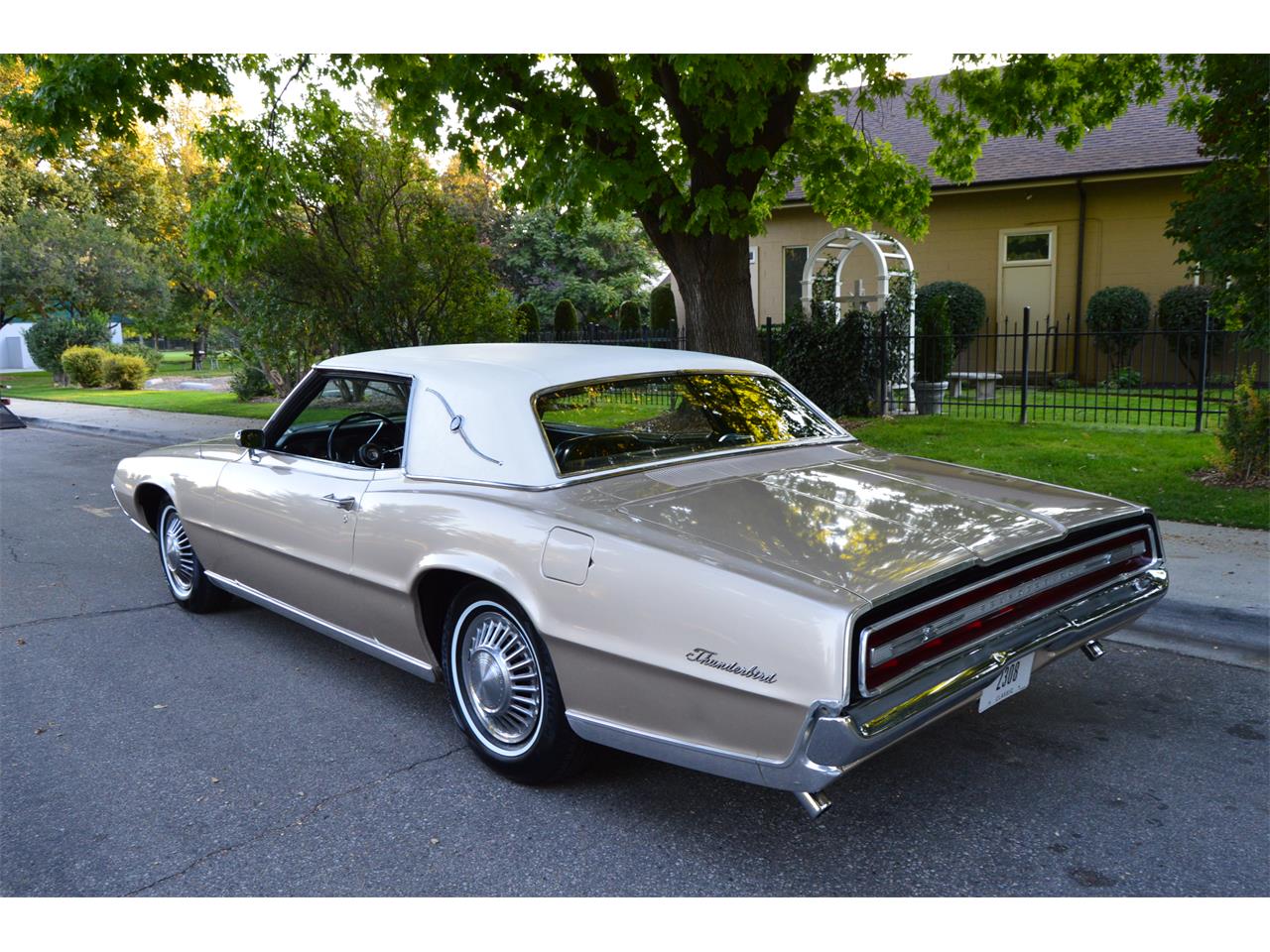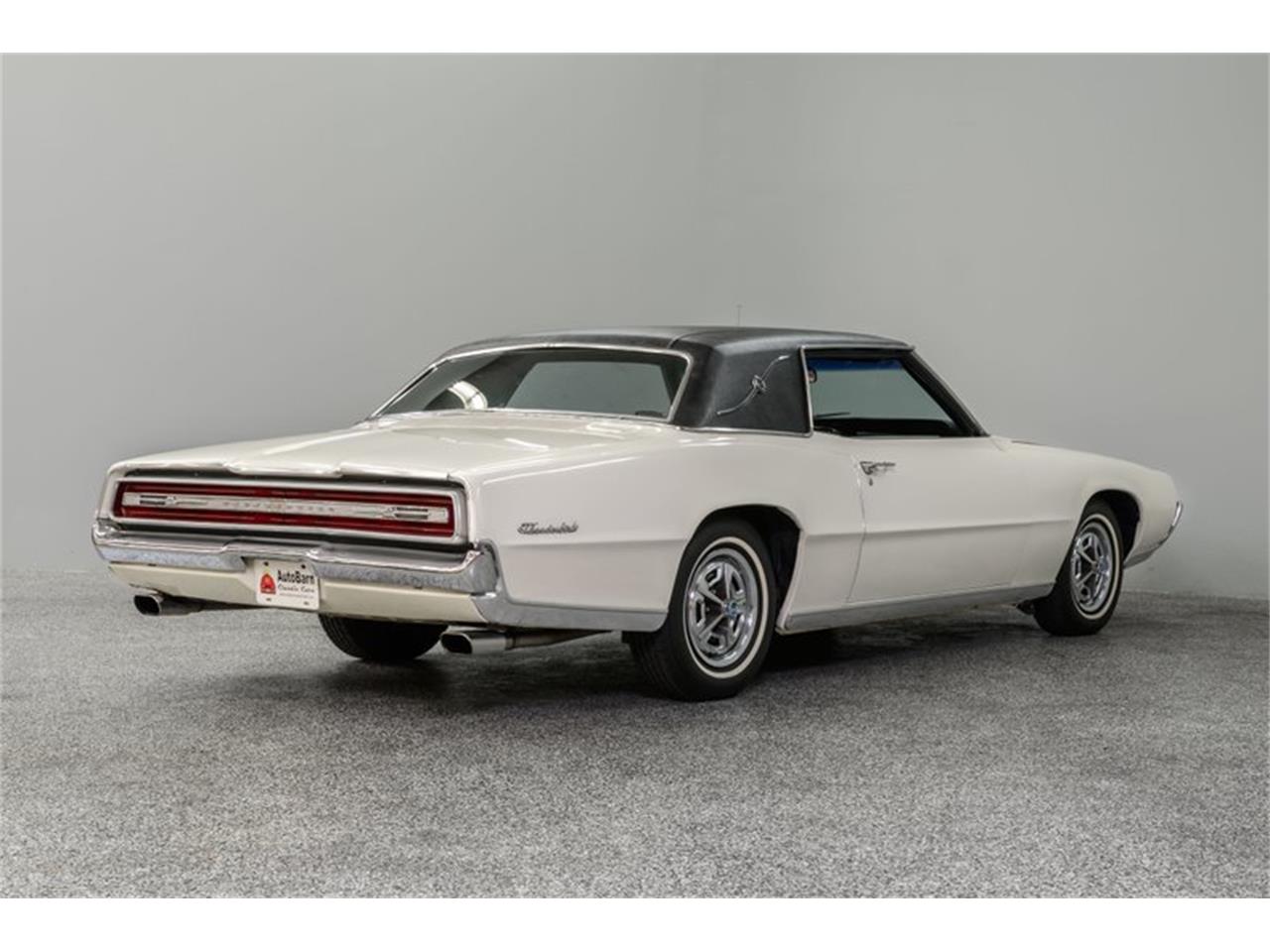

The new 1968 Lincoln Continental Mark III was based on the four-door Thunderbird chassis, and from that point until the late Nineties, Thunderbirds and Continental Marks were generally related cars, the Thunderbird following the Mark's growth to enormity in the 1972 model year. The four-door would remain available through 1971 but never generated substantial sales. Perhaps to emphasise the Thunderbird's closer ties to the Lincoln marque as it moved upmarket, the rear doors were backward-opening suicide doors as on the 1960s Lincoln Continental. Instead, the company introduced something new to the market segment a four-door model ("Fordor" in Ford parlance). The convertible, increasingly a slow seller, was dropped.

Mindful of the company's problematic experiences with the 1958 Lincolns, Ford chose to abandon the Thunderbird's traditional unibody construction for this larger car, turning to a body-on-frame method with sophisticated rubber mountings between the two to reduce vibration and noise. Other companies had already done the same the Buick Riviera, in particular. Ford's response was to move the Thunderbird upmarket, while some fans of the classic Thunderbird consider 1966 to be the last year of interest.įor 1967 the Thunderbird would be a larger car, moving it closer to Lincoln as the company chose to emphasise the "luxury" part of the "personal luxury car" designation. It, like the Thunderbird, was a small, two-door, four-seater with sporting pretensions, but it was substantially cheaper. The introduction of the Ford Mustang in early 1964 (as a 1965 model) had, however, challenged the Thunderbird's market positioning. Having moved from being a two-seater quasi-sports car in 1955-1957 to a four-seater personal luxury car in 1958, the Thunderbird had fundamentally remained the same in concept through 1966, even though the styling had been updated twice. This fifth generation saw the second major change of direction for the Thunderbird. Giberson never claimed his prize, settling for a $95 suit and an extra pair of trousers from Saks Fifth Avenue.Īccording to Palm Springs Life magazine, the car's final name came not from the Native American symbol as one might expect, but from an ultra-exclusive housing tract in what would later be incorporated as Rancho Mirage, California: Thunderbird Heights. Stylist Alden "Gib" Giberson submitted Thunderbird as part of a list. Crusoe offered a $250 suit to anyone who could come up with a better name. There was some difficulty in naming the car, with suggestions ranging from the exotic to the ridiculous (Hep Cat, Beaver, Detroiter, Runabout, Arcturus, Savile, El Tigre, and Coronado were submitted among the 5,000 suggestions). Unlike the Corvette, the Thunderbird was never a full-blown sporting vehicle Ford's description was personal luxury car, and the company essentially created this market segment. Crusoe saw a painted clay model on May 18, 1953, which corresponded closely to the final car he gave the car the go-ahead in September after comparing it with current European trends. The concept was for a two-passenger open car, with a target weight of 2525 lb (1145 kg), an Interceptor V8 engine and a top speed of over 100 mph (160 km/h). Hershey took the idea and began working on the vehicle. Walker promptly telephoned Ford's HQ in Dearborn and told designer Frank Hershey about the idea. Walking in the Grand Palais in Paris, Crusoe pointed at a sports car and asked Walker, 'Why can't we have something like that?' Crusoe and Walker met in France in October 1951. Crusoe, a retired GM executive lured out of retirement by Henry Ford II George Walker, chief stylist and a Ford vice-president and Frank Hershey, a Ford designer. Three men are generally credited with creating the original Thunderbird: Lewis D. In 2002, a revived 2-seat model was launched, was available through the end of the 2005 model year. Sales were good until the 1990s, when large 2-door coupes became unpopular production ceased after 1997. Succeeding generations became larger and more luxurious, until the line was downsized in 1977 and again in 1980. In 1958, the Thunderbird gained a second row of seats for greater practicality. Ford described it as a personal luxury car, a description which named a new market segment.

It entered production for the 1955 model year as a two-seater sporty car unlike the superficially similar (and slightly earlier) Chevrolet Corvette, the Thunderbird was never sold as a full-blown sports car. The Ford Thunderbird is a car manufactured in the United States by the Ford Motor Company.


 0 kommentar(er)
0 kommentar(er)
